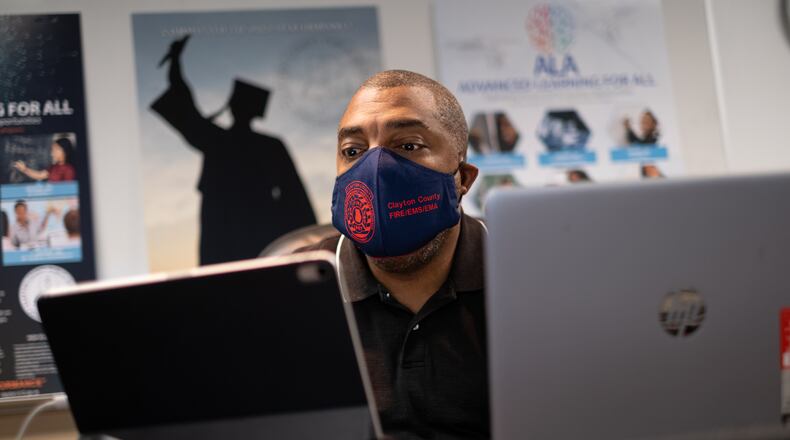A winter surge in COVID-19 cases will keep Clayton County Schools closed to in-person instruction, one of the last of metro area’s large districts not to offer any classes inside buildings.
Clayton County reported 710 positive coronavirus cases per 100,000 residents Jan. 3-16, the district said Monday at its board of education work session. That far exceeds the 100 or fewer positive cases per 100,000 the district has set as its benchmark to offer in-person education.
“Based on the data you see here, we are still in Phase 1, which is why we are continuing with the virtual learning instructional model,” said Charmaine Johnson, an assistant superintendent for the district.
The district’s decision contrasts a growing push by other metro Atlanta school systems to offer in-person classes to students who want them, despite rising COVID-19 infection rates and the deaths of teachers in Cobb and Henry counties.
Atlanta, which had prohibited in-person instruction the first semester of the academic year, welcomed prekindergarten through second grade students to school buildings on Monday. DeKalb, the other district holding out on face-to-face learning, had planned to begin allowing students back to school in person last week, but has pushed that plan to mid-February because of rising COVID-19 cases in the county.
“It looks like we may never get down to 100,” Clayton County school board chairwoman Jessie Goree said after the numbers were reported. “I did have someone email me upset about us not being open. I hope they understand why we’re still virtual.”
District leaders hinted that there may be room in the future to massage the conditions for in-person instruction. Superintendent Morcease Beasley said there is evidence that suggests COVID-19 transmission rates are lower for younger elementary students who go to school than for those who learn at home.
“That is just some more data that we should consider as we make our decision,” he said.
The school system also is hoping Clayton residents, including teachers, will take the coronavirus vaccines that are rolling out across the state. The district found that about 56% of the 2,000 employees it surveyed recently said they would take the vaccine.
“The purpose of the vaccine is hopefully reduce the likelihood of people getting the virus, so we should also see a decrease in the data, Beasley said.
“If the vaccine is having the intended outcome, we should get to the data benchmarks we initially communicated to the public,” he said. “I’m hopeful that will occur.
About the Author
The Latest
Featured


